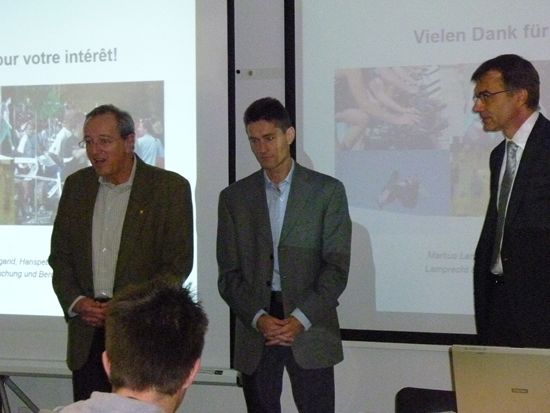Study on sport among Swiss students

Swiss University Sport Directors Conference published results of the study of sport among Swiss students. The outcomes were presented at a press conference, held at the University of Bern end of this November. The study, based on online interviews of 16,856 students from 14 Swiss universities shows that students are distinctly more active and sporting than their contemporaries who do not attend university.
The proportion of active athletes is significantly higher among students than in the population as a whole and in the 20-34-year age group, while the proportion of non-active people is distinctly lower. In particular, the difference between German- and French-speaking Switzerland that is quite pronounced in the overall population does not exist when it comes to students’ sports and exercise activities.

Motives for sporting activity/inactivity
Students primarily do sports in order to remain healthy and fit, because sports are fun and provide a balance to their studies. The experience of nature, physical appearance and sociability are further important motives for sports. However, the challenge of sporting competitions is only sought by a minority of students.
Students’ enthusiasm for sports is so great that four out of five would prefer to do even more sports if they had more time and a smaller workload.
Eight per cent of students are confirmed non-athletes. Although this figure is small in comparison with the population as a whole, it must still be taken seriously, for as a rule, abstinence from sports is concomitant with a clear lack of exercise. The most important reasons for inactivity are a lack of time and a lack of interest, with women placing more emphasis on the former and men on the latter.
For a wish to become reality, there would primarily have to be more time and a friend or acquaintance who would facilitate access to sports.
Participation in university sports
University sports make a substantial contribution to an eventful student life. In contrast with sports in general, women are more active in university sports than men, who in turn are more active in sports associations. One out of three female students and one out of four male students participate in university sports at least once a week. Participation in university sports does not decrease in the course of people’s studies and remains undiminished among assistants and doctoral students.

Assessment of university sports
A detailed analysis of the assessments of a wide variety of aspects and quality features demonstrates that university sports as a whole are awarded good marks.
Good marks are also awarded to coaches, whose personal, professional and sports-related competencies are rated as extremely positive. Good marks are also awarded to infrastructural facilities.
Most critical voices were raised with regard to group size and attendance rates. This is where the downside of the popularity and success of university sports is made visible, as it were.
Gender also plays a role in the way university sports are rated: female students rate university sports slightly more favourably than male students. Finally, participation frequency is also a relevant factor: students who participate regularly in university sports rate university sports significantly better than sporadic participants.
If the assessments of individual areas are related to their relevance, it becomes evident that students do not only regard all areas as good but also as important.
More information: Mr Roger Roth, President SUSDF; roger.roth@unifr.ch
